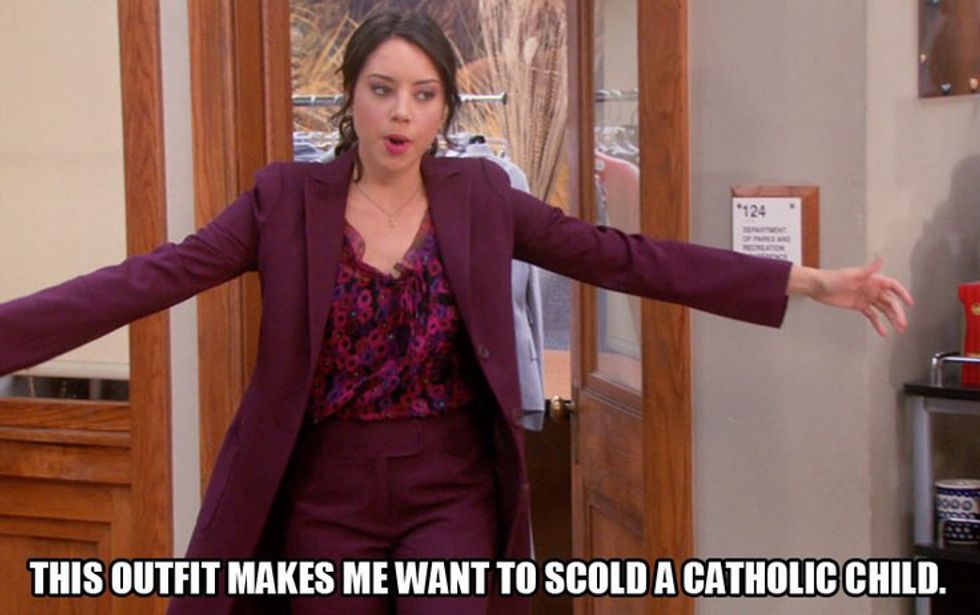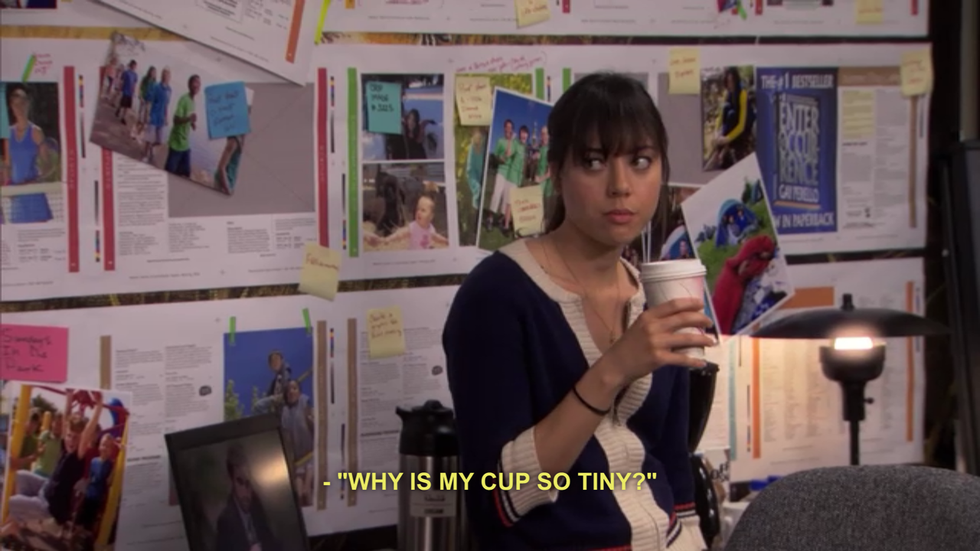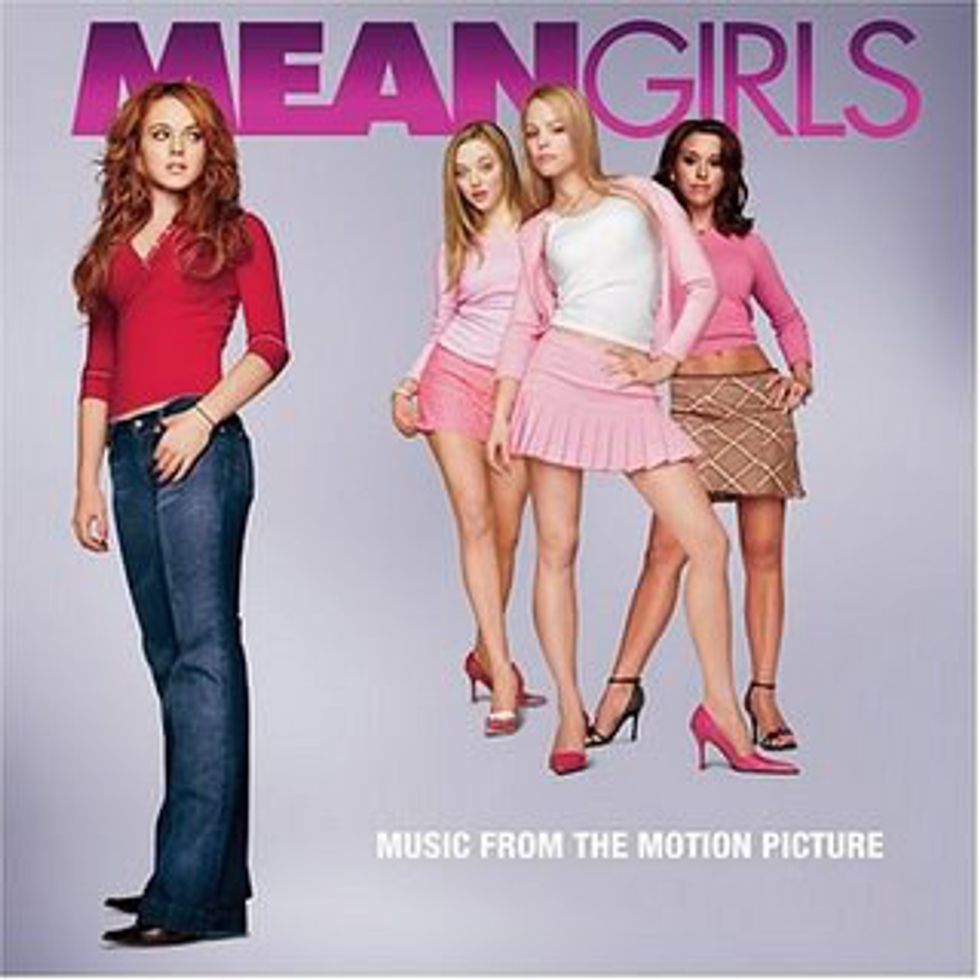Whether you’re in middle school, high school or college, or not in school at all, everyone should know basic syntax and punctuation. No matter what people try to say about language developing away from more complex and structured grammar rules, there is still the matter of meaning and intent. Syntax and punctuation are just as important to writing as the words themselves. Everyone should know how a semicolon is used, how to avoid comma splicing, how the apostrophe is used, the difference between "affect" and "effect," when you use "you and I" versus "me and you" and the four kinds of sentences.
Note: all of the grammar advice and rules you are about to see come straight from my guide "Friends Don't let Friends Forget their Grammar Rules."
1. The semicolon.
In basic terms, a semicolon can be used to replace a period or a comma.
When replacing a period, the semicolon may be used as what is often, jokingly, called a “glorified period” to connect two related independent clauses. As for the comma, the semicolon, or the “glorified comma,” may be used to replace the standard commas used to separate topics within a list when one or more topics of a list has a comma to separate adjectives or supporting nouns of the particular topic. Confused? Let the following examples explain.
Example of the glorified period:
My dog has been scratching at my door every night; I think he is afraid of the dark.
The semicolon connects two independent clauses that are related. Both essentially have to do with the dog being outside the door and both are complete sentences, making the use of the semicolon correct.
Example of the glorified comma:
I’ve been to Montpelier, Vermont; Concord, New Hampshire; and Boston, Massachusetts in the past five days.
Note that each different town and its coordinating state in the sentence are one topic, a place, separated by a comma. Therefore, the semicolon is used to separate the places to show they are separate places, replacing a standard comma.
2. The comma splice.
“F.A.N.B.O.Y.S” stands for the words for, and, nor, but, or, yet and so — an acronym to help writers, like yourself, remember how to use their coordinating conjunctions. One can connect two independent clauses — two complete sentences — with either the use of a semicolon or a comma. In the case of a comma, the sentence can be considered grammatically incorrect if the clauses are combined without a F.A.N.B.O.Y.S. following the comma. This grammatical error is known as the comma splice.
“For” should be used when combining two clauses that show cause and effect. “And” should be used when the second clause is an addition to the first clause. “Nor” should be used when continuing a negative clause. “But” should be used when the second clause contradicts the first clause. “Or” should be used when two choices are offered by the clauses. “Yet” should be used when conjoining two clauses that create a contradicting relationship. “So” should be used when combining two clauses that show cause and effect.
3. The apostrophe.
It is a common misconception that the apostrophe is used when making a word plural, but that isn’t the case. You should use an apostrophe when making a contraction or when indicating possession. In the case of singular possession, the apostrophe should be placed before the “s” at the end of a word. With plural possession, the apostrophe should be places after the “s” at the end of a word. You shouldn’t use an apostrophe when something is plural; an apostrophe shows possession.
In the case of a contraction, it should be remembered that a contraction is a shortened version of a word, syllables or a group of words through internal letter omission — such an action that can be done with the use of an apostrophe. It should be noted that a contraction is not an abbreviation, clipping or an acronym.
Example of singular possession:
The woman’s cats were used to the occasional treat.
This use of an apostrophe shows us that there is one woman and that she owns the cats that like treats.
Example of plural possession:
The cats’ treats were often hidden in the pantry.
This use of an apostrophe shows that there are multiple cats that possess the treats that are hidden in the pantry.
4. "Affect" vs "Effect."
If is often confused when one should use the word affect vs. effect. An easy way to remember is to know that affect is a verb and effect is a noun and should be used accordingly.
Example of "effect":
The effect of global warming may be seen in the lowering populations of frogs.
Examples of "affect":
Though, of course, global warming affects much more than just frogs.
5. "You and I" vs "me and you."
One of my personal favorite rules: One should be careful when speaking of themselves and other people. When listing people, you either include yourself first or last in the list. If you and your list of people are doing an action, you list yourself last saying “and I.” If you and your list of people are receiving an action, you list yourself first as “me.”
Example of "you and I":
Michael and I enjoyed the game, especially when player number 12 broke his hockey stick over another player’s head.
Here, the speaker is performing the action — they enjoy the game — and list Michael first.
Example of "me and you":
Sarah drove me and Michael to the game.
Note how the speaker and Michael are receiving the action of being driven to the game, and Michael is listed last.
6. The four kinds of sentences.
Lastly, there are four kinds of sentences based on their purpose: a declarative sentence, an interrogative sentence, an imperative sentence and an exclamatory sentence. Almost every person knows how to write these sentences, but it is important to know the names of the sentences we write.
The declarative sentence is simply a sentence that makes a statement followed by a period. An interrogative sentence is a sentence that asks a question followed by a question mark. An imperative sentence is a sentence that makes a command or a request followed by a period or exclamation point, depending on the mood. An exclamatory sentence shows excitement or strong feelings followed by an exclamation point.
Take these basic grammar rules and apply them to your essays. With these five tips, and one piece of knowledge that should be common, your essays will be looking better in no time.










 Photo by
Photo by  Photo by
Photo by  Photo by
Photo by 

















